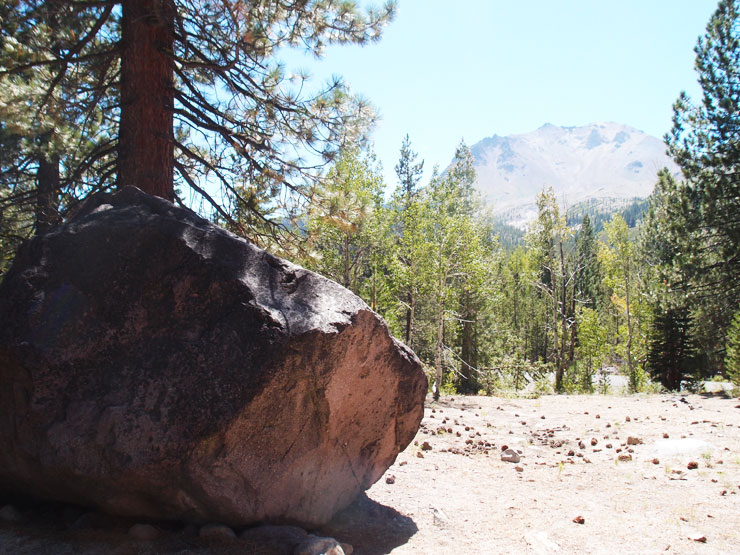Lassen Volcanic National Park: Devastated Area
April 01, 2016This area is aptly named Devastated Area because of all of the remnants of the volcanic rock and ash that the volcano ejected on May 22, 1915. In June of 1914, Lassen began to rumble and tremble and continued to have 150 small eruptions, forming the crater until the volcano erupted on May 19, heaving lava, ash, mud, and melted snow down the mountain, creating a wide empty swath as the avalanche roared down the mountain. (Lassen first formed about 27,000 years ago as it pushed through Mount Tehama, which was 1000 feet taller and now gone.)
This red dalcite formed 27,000 years ago when Lassen Peak first erupted and was carried down the slopes during the 1915 eruption. (paraphrased from the interpretive sign)
Guess which of these rocks is new (some are around 100 years old, not the typical thousands, millions, or billions years old). Left to right: Gray dacite: formed when Lassen erupted 27,000 years ago; red dacite: from the same era as the gray dacite; Black dacite: formed from lava build-up several days before the eruption and shattered during the eruption; Light dacite pumice: solidified magma fragmented by expanding gas bubbles; banded pumice: formed by the simultaneous mixing of two different magmas: light dacite and dark andesite; reddish rock on the right: not part of the sign haha
This rock was still hot several days after it was ejected from Lassen. B. F. Loomis, who took a photo of this same rock labeling it "hot rock," took many photographs documenting the eruption, and also helped establish Lassen Volcanic National Park.
These rocks were carried down the avalanche and the cooler surrounding air temperature rapidly cooled the rocks from outside in. These rocks fractured inwardly though not all rocks fractured because not all rocks were hot and were formed and cooled 27,000 years ago.
Devastated Area Interpretive Trail
Length: 0.5 mile loop
Happy travels!
Cat












0 comments